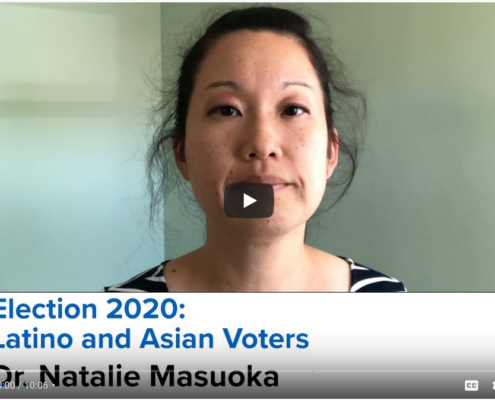Posts

The Trump Paradox – w author Raúl Hinojosa (video)
The Trump Paradox: Migration, Trade, and Racial Politics…

LA Social Science Election 2020: Latino and Asian Voters
UCLA Political Scientist and Race, Ethnicity, and Politics…

UCLA Professor Barreto Writes Timely Op-Ed on the Elections and Immigration for The New York Times
October 24, 2018 UCLA Professor Matt Barreto wrote an…

